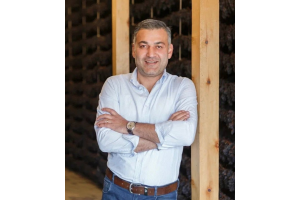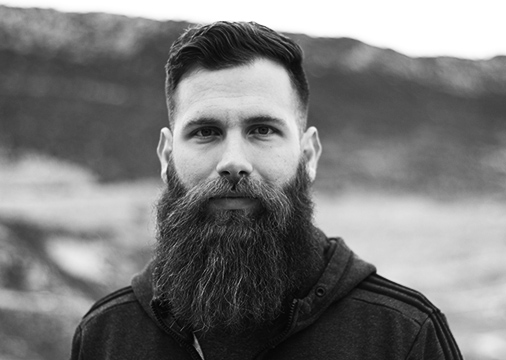
Ivan Miloš' family has lived and made wine in Dalmatia for over 500 years. Following the end of communism in Croatia his father Frano was one of the pioneers pushing quality winemaking. He launched one of the first quality wine brands in Croatia, "Stagnum," based on the indigenous Plavac Mali grape. Influential wine journalist Hugh Johnson called Stagnum the first Croatian cult wine.
The famly vineyards are located in the town of Ponikve on the Pelješac Peninsula off the Dalmatian Coast. The vineyards are very steep with 45 degree slopes on pure dolomitic limestone. The Miloš family are dedicated to producing natural wines with a minimum of intervention. Wine is aged in big oak barrels made of Slavonian oak for a minimum of two to three years before bottling, so the wines maintain their own characteristics and the unique qualities of the Plavac Mali variety.
Ivan Miloš talks to Grape Collective about the evolution of wine in Croatia, the impact of communism, the war and the uniqueness of Dalmatian wine.
Christopher Barnes: Ivan, how did your family get involved with wine?
Ivan Miloš: Actually my family has lived in this region for about 500 years.

500 years?
We didn't move very much. Some family members moved away, but someone always stayed here to maintain the family tradition. This peninsula was always an agricultural area—the former Republic of Dubrovnik—so my family always worked in agriculture. It is one of the main things to do here, and this region has always been known for making wine and olive oil. My family always grew special grapes, and then also made wine.
In the past there were some difficulties. For example, in the last century, we had a communism regime, and we were not allowed to have a family business, a family winery. We still had our vineyards, but we were supposed to give our grapes to the government-owned winery, although my family always wanted to produce wines for themselves and to sell it with the Miloš name on it. Then in the late '80s, when we had a more liberal economy, my father was the first in this region to establish a family-owned winery. In the last thirty years, we operated as the Miloš Family Winery. We manage our own vineyards, our own wine growing, and then we make our own wine.
Fantastic! Your family is known as one of the real pioneers of quality winemaking in Croatia.
Yes. Unfortunately, in the communist era, they didn't care about high-class wines. They were only interested in mass production. My father actually was the first, or at least one of the first five in Croatia, to start producing high-class wines. And his brand, Stagnum, is made from our best selection of grapes, and has the most aging of our wines. Stagnum was proclaimed one of the first Croatian cult wines. He was a real pioneer in fine wines, and luckily after him, there were a lot of small and at least privately-owned wineries who decided to produce high-class wines too.
The above video is shot in 360. You may not be able to experience the 360 experience depending on your device. Access the video directly on Youtube.
And when your family made Stagnum and had a high price point, did other people think, "What are these guys doing?" How did that happen?
We are just pretty weird. We are just pretty weird. I remember in the early '90s in Zagreb, there was the first wine shop called Bornstein. War was still raging in some parts of Croatia. And my father was starting to sell his brand Stagnum. And before that there was just one brand made by the government winery which was very popular. At this time, our wine was two or three times more expensive. And the shop owner said, "Frano, (my father) you're crazy. No one will buy such expensive wine from an unknown producer." And especially because, it is really important to note, we are living in a small village named Ponikve. Nobody ever heard of it. Ponikve, where it is? What are you doing there? You still produce wines? And, it's a big thing, but the quality was so interesting, even some people outside of Croatia were impressed.
So it became a best seller. And there was always high demand, because production was very, very small, very limited. Just 200, 300, 400 cases per year. It was always sold out immediately and that was good because other people were looking at it and saying "Let's try to do something like that." Of course most of them failed because you can’t just decide to make high-class wine. You really need to make it. If you want to make anything high class, it doesn't start from the top. It starts from the bottom. It starts in the field first, and you get a final wine which is high class. You don't just make high class because you decide you want to make it. But still it was a great motivation for others.

Tell us a little bit about your philosophy of viticulture and winemaking. As well as being a pioneer in terms of developing a value point for wine, you're also a pioneer in terms of the organics that you practice.
Yes. This area as you may have noticed, is great for organics because of the climate and the soil, especially on the hillside vineyard. In the past, before all the chemicals were introduced, most people were farming organically, of course. Remember it was only 100 years ago. But then because of the chemicals in the area, they were trying to get the maximum amount of fruit and they didn't care about quality, so they started to use a lot of fertilization, lots of chemicals in the vineyards, and my family, and some others of course, were still doing organics. Even today we do everything certified organic. We wanted to show that in this region, without any chemicals, you can produce high-class wines. I think that there is a huge potential for doing organics here, but it is very hard, especially because I was talking about the grass, the weeds in the vineyards, you need to pull them by hand.
Over there you can choose any machinery, everything depends on your work. Also there is much more risk in doing organics especially when you're making natural wine. It means making native yeast fermentations. You don't filter. It's always risky and it's a very intuitive process. You really need to be there. So because of that most people don't want to do it. Its hard work. Its still hard and there is a lot of risk involved. But I think there is a lot of potential and I believe that in the future there will be many more organic producers. Luckily now, there are more than there were 10 years ago.
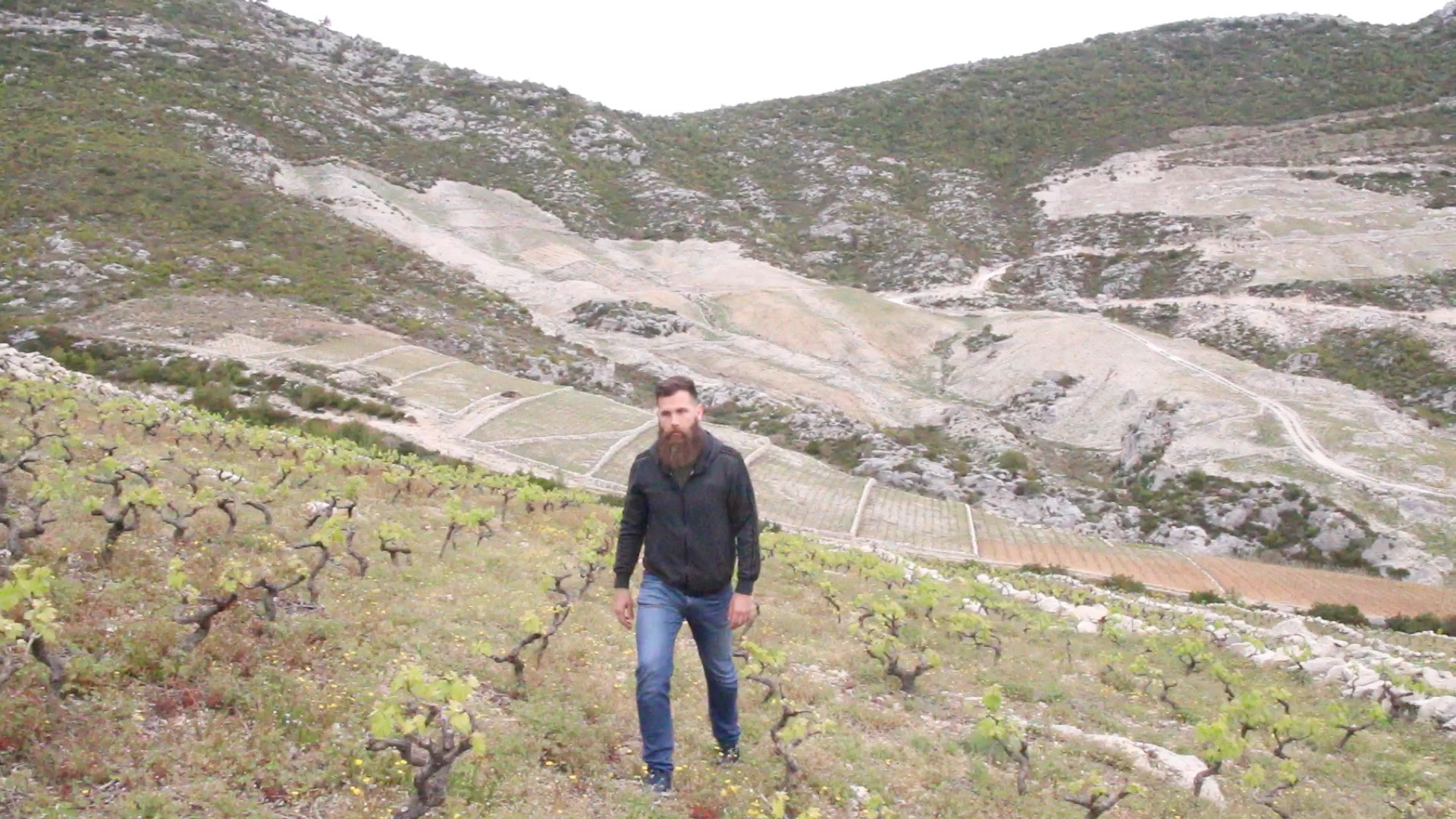
Talk a little bit about the terroir here in this vineyard, where we are right now.
Yes, we are right now in the Pelješac Peninsula and there are very few green top positions. One of them is this area here, this is the so-called Ponikve Village Appellation, very unknown to the public. But it is becoming more popular because of my father Frano. It’s a great area mostly because of the soil and the mild climate conditions. The soil here is like dolomitic limestone but not just limestone because of calcium carbonate, it also has magnesium carbonate, so it's like dolomitic limestone, which is great because it keeps the humidity. The problem in this region in the south of Croatia is that it can be very hot and dry in summer, which means you generally get very high alcoholic wines, which we don't like to produce here. We want to make wines, on the dry side, still quite herbal and mineral, not jammy. And this soil really helps us. This village here, this appellation, has one of the best soils for growing Plavac Mali because it can grow it, it can keep humidity deep inside, so the Plavac Mali doesn't suffer during the summer season.
These vineyards are very steep.
They are actually, yes.
Stone terraces, the gradient is quiet intense. You can fall down if you're not careful, right?
Yes.
How do you work these vineyards?
Actually, I think in the past the people who worked these vineyards built terraces. That's one of the ways which helps us to work, because it's too steep. But still people are used to it. They're like goats. They can go everywhere and then we built the terraces, we built dry stone walls. It's also important not only for ease of farming, but also for soil preservation, to combat erosion. So the terraces and dry stone walls keep the soil intact. But why do people do it? People do it because that's the best position for growing Plavac Mali, it's quite a hard grape, because if you want it in very deep soil, very fertile soil in the valleys, it doesn't get any good quality. It's very light, very out of balance, so you need to grow it here, where you have much more sun and then you have this style of the soil, which makes plants suffer a little bit, so it needs to struggle, so it gives much more structure and minerality to the grape—much more balance.
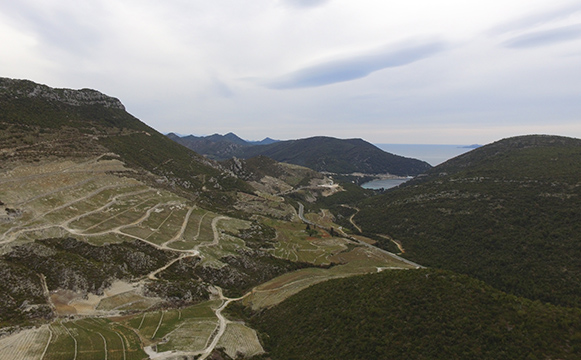
How old are some of your vines here?
Actually, in this position here, approximately 35 years. And of course we have younger vines, some are just seven or eight years old, which are the newer ones. In some other areas we even have some older ones.
How does the age of the vine impact the quality of the wine that you're making?
I think like everywhere else in the world, it's usually older vineyards that give you better fruit. I think here it's even more noticeable. It is more noticeable because we don't do irrigation. And then it forces the grapes to take its roots very deep inside to find humidity so the old vineyards can better handle the heat during the summer season. In the last 15 years we have had many more hot years, you can see a greater difference in the young and the old vineyards. Usually, the old vineyards produce much better balance and we keep much more fruit. Sometimes the very young vineyards produce limited fruit, because the vines are very stressed out during the hot season. But the roots of the old vineyards are often 30 feet deep, they don't care about the heat or about the dry season. They produce the best fruit. Actually, 2015, for example, was one of the hottest summers in this region. We had a sun period in the summertime for nearly 30 days, with temperatures over 100 Fahrenheit. Extremely hot. And that was one of the best vintages for our old vineyard wines.
Talk a little bit about vintage variation here. You're close to a large body of water, and you're getting a nice breeze.
Yes.

It's sunny, it's dry, how much does that change from year to year? And how does it impact the wine that you produce?
In this position here by the sea, there is a little bit of a breeze, which is very important. When I talk about those hot days, you always get those breezes which cool it down a little bit, which is very good of course, and we have different variations from year to year. For us, we prefer hot and dry earth. We don't like too many rainy years. Even here on the hill there's not much of a problem with the rain. So because we do organic in the vineyards and then we do natural-style winemaking, we really want to show people that every year is different. In each of our wines, there are differences from year to year. In hot years, you get more fruitiness, more structure. In the rainy years, you get more earthy, mineral, or even herbal, sage aromas. There's a lot of variation and we want people to know that. We don't want to cover up its uniqueness of the year.
Talk a little bit about the evolution of the wine industry in Croatia.
Yes, Croatia is part of Europe, of course. And it is one of the oldest winemaking countries in Europe because it's part of the Mediterranean area. Mediterranean people were producing wine for thousands of years. For example, on this peninsula, there is one cave dating back 2,400 years and wine tools were discovered there. So people were still living in caves and drinking wine. It was not Croatia people, of course. Other people were living here. So during the long history of this area, wine was always a part of the culture. Of course there were difficulties. There were also great periods, for example, the late 19th century was one of the best for this region. Phylloxera came to France in 1854. And they lost most of their vineyards. They ran out of the wines but they still got phylloxera. Approximately 30 years in the 19th century was one of the best years in history in terms of quantity and quality of wine production.
During that period, Croatia had 10 times more vineyards than we have today. They were even exporting wine to France. Unfortunately, we also got phylloxera 40 years later. And we lost most of the vineyards. At that time most of the people emigrated out of Croatia, and then we had a communism period which was also very bad in terms of quality. And then in the last 30 years we have had a more liberal economy, we have privately-owned winemakers who produce high-class wine. So I think in the last 10 to 15 years, our wines have been getting to the right place where they need to be.
And talk a little bit about the impact of communism. You had big cooperatives?
Yes.
How did that change the lives of the people that were making wine?
It was a big change for the people. They weren't allowed to have privately-owned wineries, just cooperative wineries owned by the government. The main thing is that people were paid by weight for their grapes per kilo here. What we do here, at this winery, yields much less than one kilo of grapes per wine, and if you grow it another way around in the valleys or somewhere else, then you usually yield four to five kilos. So you made five times more money for a very bad grape. My family still didn't want to do it. But most people were doing it, just to make money. And people lost the ideal of what grape growing really should be. It didn't make sense to grow high-quality grapes because they were dumping them all together. So I think in that period it wasn't just bad because of economic reasons, it was also bad for the quality of the wine, and also the mindset of the people. People lost their connection to the land. They lost their common mind about the interaction in the vineyard, so everything was lost. It took 10 to 20 years, maybe 30 years for some people who are a bit stubborn, to get back to the main thing. The real logic of nature.

And then you went from communism to this terrible war that occurred. And the front line for a while was very close to here.
Yes, about 10 kilometers from here.
How did that impact everyone?
Actually here in the Pelješac Peninsula, the war wasn't so long. Unfortunately, in other parts of the region it was much worse. So for example, this was in 1991 we had a terrible war here. We didn't produce any wine in that year. We don't have any wine from 1991. Still we were lucky because no one got hurt. We still had our family land. And our family winery luckily wasn't damaged. And then after the bad period, we focused on our work. I think its very important to focus on the main things, then you forget the bad things. To think forward, to forget this was just a bad period. We think about the future. Now our goal is to show people what we can do. We are very proud of our winemaking techniques.
And because of communism and the war, Croatian wine has not evolved internationally in the way that some other regions have. How do you perceive the way the world looks at Croatian wine and what needs to change for people to pay more attention to it?
You noticed very well, because of the communists we were a closed market, while Italy and France, especially in the '70s and 80's, were importing and making big names for themselves, especially in the United States. If you talked to the biggest wine markets in the whole world, nobody knew about Croatia. Even today when I travel to do presentations, some people who are not into wine ask me, "Oh when did you start producing wine in Croatia?" I said "A few thousand years ago, you know, and we're still doing it." And so I think because of that, people were not aware of it. Now we need to put even more effort into showing people what we do here. Its hard to farm here, but its even harder to show it to the world. So lots of energy is involved.

In the past Croatia has had a very similar philosophy of government to the United States.
Actually, not just Croatia, to be more specific let’s say this region. We had a former Republic of Dubrovnik, which was one of the wealthiest republics in Mediterranean Europe. And we had a constitution way back before you had one in the States. For example, the constitution in the United States was some sort of a copy of the constitution of the Republic of Dubrovnik. And actually this small Republic of Dubrovnik was the first one in the world to recognize the independence of the United States, so it was very well developed. The culture was high here, and you know there was the same progress in the States like here. But unfortunately we got in that bad direction with communism, and you kept going in a good way.
Ivan, Croatia has a number of very distinct, unique winery regions. Can you tell us about them?
Yes. Croatia is quite an interesting country, it is quite small. There are just 4.5 million people living here. It’s not a big country, but it has lots of diversity. We have four zones for wine growing. In the northern part of Croatia, we do ice wines, and they even grow Rieslings, people see it more like continental grade. And then here in the south we do a lot of full body, structured, Mediterranean-style types of wine. We can grow most of the great varietals in the world in some parts in Croatia. That's why Croatia is such an interesting country. Another reason is because we have plenty of our own indigenous varietals. There is a lot of diversity, a lot of unique styles, and even in the same area, like the Pelješac Peninsula there is a lot of micro-locations with different types of soil. It’s a very interesting country, if you want to research more about wines.
Ivan Miloš talks about the evolution of the Croatian wine industry
Talk about the major wine regions and their distinctive characteristics and where they sit in the country.
If you start here in the south, this is Dalmatia. This is a small coastal part of Croatia. The costal area is divided mostly like Istria, and coastal part by Istria, and of course Dalmatia. So we are now in Dalmatia. There is also a lot of diversity throughout the same region. The islands are quite different than inland. And then different islands, different microclimate conditions, and different soils. So now for example, we are on the Pelješac Peninsula which is part of the Dalmatia region. Over there we mostly grow Plavac Mali vines. So we mostly grow red grapes in Dalmatia. But in some islands like Korcula, which is just by this peninsula, they are famous for their white wines. And then if you talk about other areas like Istria, it’s a very different climate.
It’s a much cooler climate compared to the Dalmatia. So the grapes we grow here can't grow over there as well and the other way around. So over there they grow mostly Malvasia, Teran and a lot of international grape varieties. In the Krk they have Žlahtina which is a very good white wines from that area. And there’s a small part of Croatia where we don't grow any vines. That's between the north part and coastal part where it is too cold. It’s too cool to grow anything. And then in the northern part of Croatia there is Slavonia. And there is the hillside of Croatia, above Zagreb. Still quite a different environment, different soils. The Slavonia region is famous for the Graševina, it's a very good indigenous grape variety which gives you a lot of complexity. If you talk about white wines, you can make even some like that. Sweet ones but most of them are made in a fresh style of white wine.
Lots of international grapes like Merlot, Cabernet, grow very well over there. In the hillside of Croatia for example, in the Plešivica region, there's a small appellation there, and they do a lovely sparkling wine. There is Croatian champagne, you know. Some of the best sparkling wines are made over there. There are a few producers who do mostly sparkling wines. They do a lovely Pinot Noir, Riesling, but also Chardonnay, like international grapes. And then even up north there are some famous producers of ice wines. One important winery won gold medals four or five years in a row at the country-wide awards for their sweet ice wines.
So to keep it simple, Croatia is a very interesting country, lots of diversity.

(Photo of Frano Miloš courtesy of Blue Danube)
Ivan, post communism, there were some legacies of the communist era that affected the wine industry in a negative way, and your family was very instrumental in standing up against it.
It's like moving from communism to liberal economy to capitalism. It’s not just moving policy, it’s also changing the mindset of the people. So in the old days it was hard to change the mindset of the people, it was even harder to change the legacy, the laws about the wines. Still, even today some laws are quite similar to what we had under communism.
For example, if you want to sell your wine in the market here, you need to go through the same process people were doing 50 years ago. Of course you need to do chemical analysis, like everywhere else in the world. That's okay. But still there is someone working in the main cities and they are tasting the wines, and they give you the points, and they tell you what you need to write on your label so it's like "table wine," "quality" or "premium wines." It doesn't make sense, you know. It doesn't work like that.
In France and Italy, they have appellations. My father was always trying to teach people that we need to create a system to make distinctive appellations. For example, we were the first winery in Croatia to do protection of origin for appellation of Ponikev Village. We really wanted to show this unique place and this soil, microclimate and style of winemaking. And we wanted to guarantee people that if they buy the wine from this area, they will get something typical of this region. Sending the wines to the main office, just for some people to taste, doesn't make any sense.
My father was the one who was always fighting against the system. So he had big problems. Even we got lots of vintages which are forbidden to sell because of the government board which is ridiculous, you know. Our southern people in the States don't believe we have something like that. But we are part of ex-Yugoslavia country so it's common for us.
It’s almost as if you had Robert Parker working for the United States government, you know, rating every wine.
Yes, but even that makes more sense because Robert Parker knows something about wine. Those guys who are sitting in their government offices know nothing about wine. They are people who are studying for a few years, you know, the people who don't know anything. They studied for a few years and now they think they are experts. These are the people you need to be scared of. People who know a little bit, but they think they know everything. People who know much, still know how little they know. I'm not brave enough to judge other people’s wines, if it’s regulated by law. If I say something, I can tell you what I think about some wines, but if they take my opinion and put it on a label, like the government warning, it doesn't make sense.
It seems a little crazy.
Yes, definitely.
It seems a little crazy for sure. Now we're in the cellar here. You have some big Slavonian oak barrels. Why Slavonian oak and why the size of these barrels?
Slavonia— people who know anything about European wines know that Slavonia is one of the best regions in Europe for oak, even the best Italian wines, Barolo, the old-school ones, are made in big Slavonian oak. You know, we didn't want to change traditional winemaking here, we really wanted to keep the same style of winemaking, and the Plavac Mali is great as it has a very small berry, very thick skin, a lot of tannins, so you don't need additional tannins from the new oak. We really wanted to keep it in the same style people were doing in the past. Big oak barrels and long aging just to get micro-oxidation to get the wine more elegant, more soft, but without an oaky taste. And big Slavonian barrels are perfect for it so we keep using them. I can see there's one over there from 1942, and even some are older, those are from the '50s. So we really keep them for 70 or 80 years.
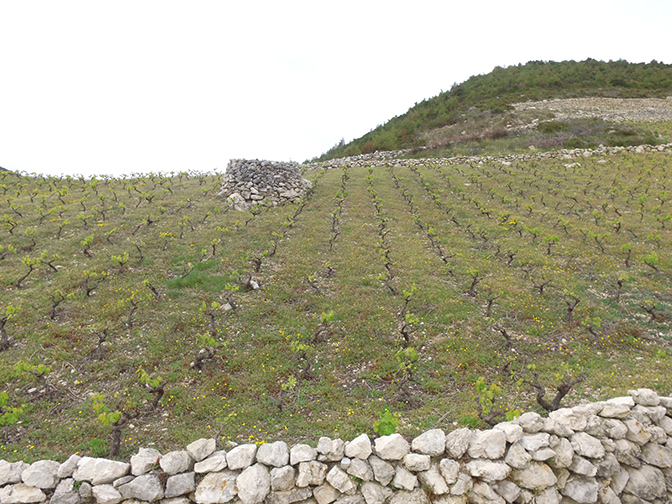
And your philosophy of winemaking in general?
Of course we do organic wine growing. We make wine just from our own vineyard. I think in the States you call it estate bottled, so that's what we do. Today we do just our own vineyards, we do different selections from the vineyards, but all of the wines here are made in a natural style. So it means we have to do native yeast fermentations, we usually keep it on the skin for seven to 10 days, depending on the vintage, because the Plavac Mali is quite a tannic grape so you don’t need more skin contact than that. And after we do the aging, in those big oak barrels I was talking about, we don't filter the wines. We don't put additives, and we have just a little bit of sulfites in most of the wines much less than 20 part per million. Very low. And after we do the long barrel aging for the red wine, at least two years, for the basic one. And with the premium labels it is four years or even sometimes six years of barrel aging. We do at least the same period of time on bottle aging. So our current release on classic brands are 2013, four years old and the premium label is from 2007 which today is 10 years old. That's currently; everything younger than that is still aging.
That's a lot of age.
Lots of patience. Our main goal is to showcase the grape, to make the wines with pure expression of the grape variety that's Plavac Mali here, in this terroir, this unique soil we have in our vineyard. We are lucky because we have such unique soil which keeps good humidity, good acidity, combined with a huge tannin structure, give us really complex wines with a very big potential for aging. So we don't want to release wines until they're ready but still those wines can be aged 10 or 20 years more.
Ivan tell us about Plavac Mali. It's a very unique grape. It has a good structure, it has got a lot of fruit, it seems to age extremely well and it's a great grape you really have just here, right?
Yes. Plavac Mali is an indigenous variety. It's the most popular red grape in Croatia and around this area here, on this peninsula, around 90% of the grapes are Plavac Mali. As you may know, Plavac Mali is the offspring of Zinfandel and Dobricic, two indigenous Croatian varieties. Dobricic is originally from Croatia and in the past we had a spontaneous crossing of Zinfandel and Dobricic, two local grapes, and we got this one: Plavac Mali. This is like the child that got the best of both parents because it has fruitiness, complexity, even nice acidity from the Zinfandel, but also thick skin, nice complexity, very nice tannin structure from its Dobricic parent. So this is the kind of grape if you plant it in the right place, and if you do the right way of vine growing, you can make really big complex red wines with a huge potential for aging.
The difficulties with the Plavac Mali grape can be very low acidity, and lack of fruitiness. That can be a problem with some type of the soils but if you have good wine-growing management you can even control that and then make really big, classy wines.
It's almost like the Brunello or Barolo of Croatia!
Yes so for most people who don't know about Croatia, or are not from Croatia, when we get visitors who are really into the wines, and they are tasting our Stagnum label which is our well-known label, and they do the vertical tasting, like a few vintages in a row, they say "This is something like old-school Brunello or Barolo style," you know. Something like that because it’s similar winemaking and also because of very high tannin structure which gets very elegant through aging and keeps quite an alive taste in those wines. We also want that earthy, herbal taste.
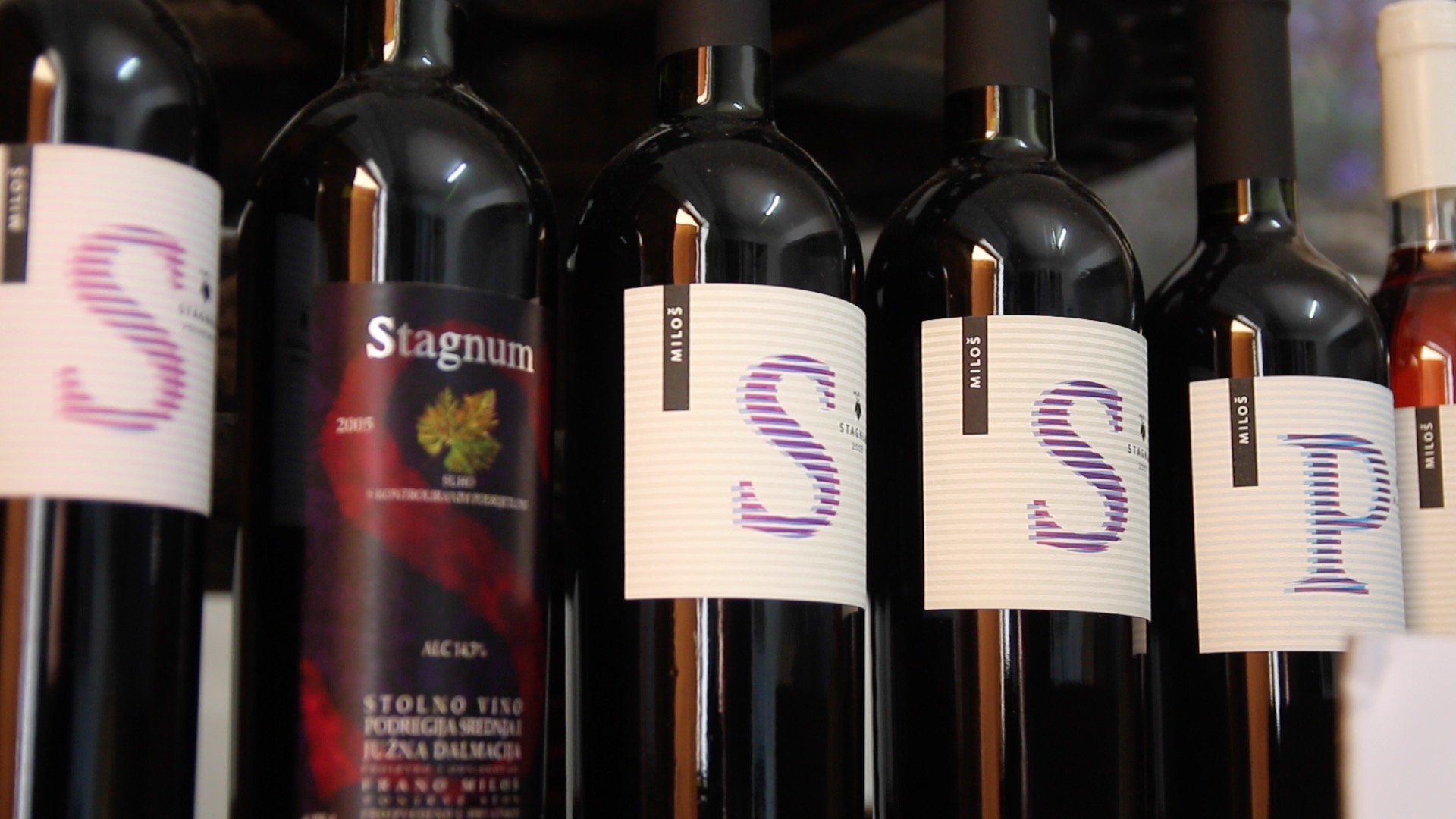
Talk about Stagnum, Ivan. It's another instance where your family was very influential in getting the market to believe in premium wines.
Yes, after the communist period, Stagnum was the first Croatian high-class wine. Even in the Hugh Johnson Pocket Guide, it was proclaimed the first Croatian cult wine. It was tremendous for the Croatian wine market. It was the most expensive wine at that time in Croatia. Most people who worked in the trade told my father "Oh you are crazy. You can't sell some wine" which produced just some 300, 400 cases "for such a high price, from a very unknown region." Like this Ponikev village. But my father really wanted to show others that we could produce really high-class wine here. And he always said, "My goal isn’t to compare my wines to other Croatian producers. I was always comparing myself to the best producers in Europe." Although he lives in such a tiny, unknown place, he was always comparing his wines to the best wines in Europe, particularly Italian old-school wines. And his goal was to make something similar, but unique to this region. And other winemakers were looking at Stagnum and it was quite good motivation for them to also start producing high-class wines. And then luckily, in Croatia we were able to develop a market for fine wines, which was very important because without a fine wine market, even the general market, can't be good.
More on Croatian wine - read Želko Garmaz's Grape Collective feature Croatia: A Land of Wine Stories
Also check out our interviews with Mike Grgich and Professor Carole Meredith
Photography by Piers Parlett









